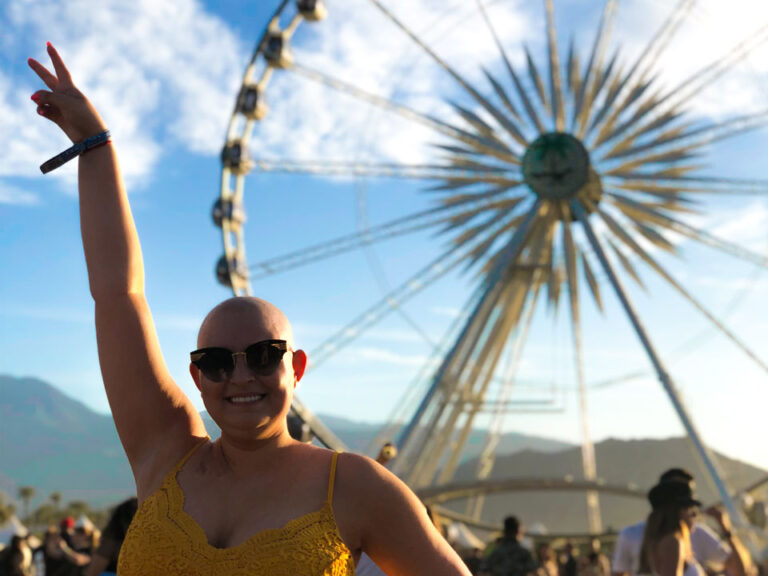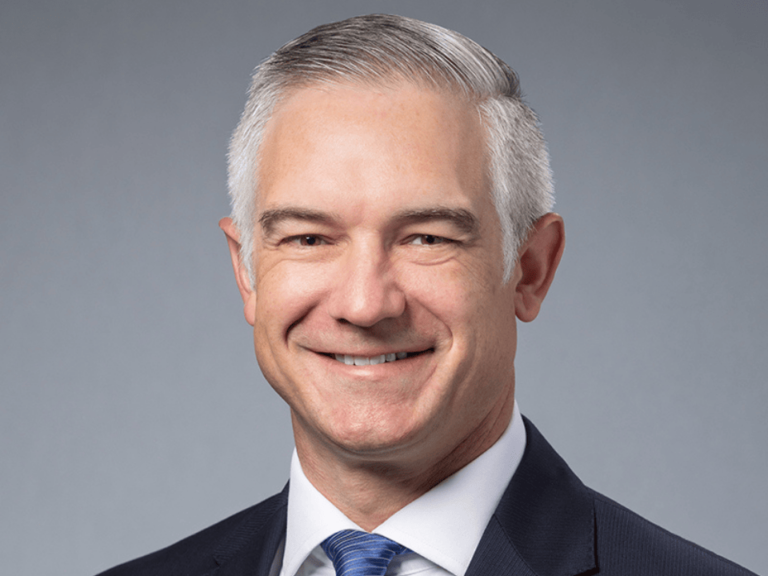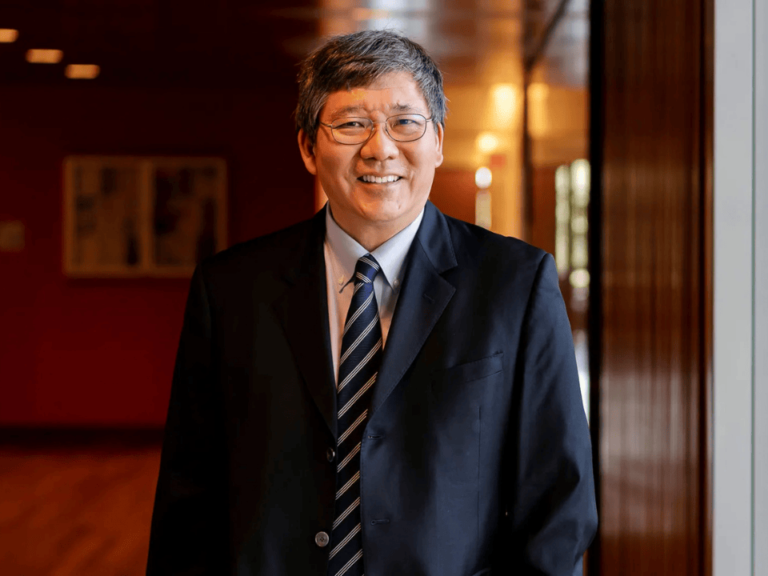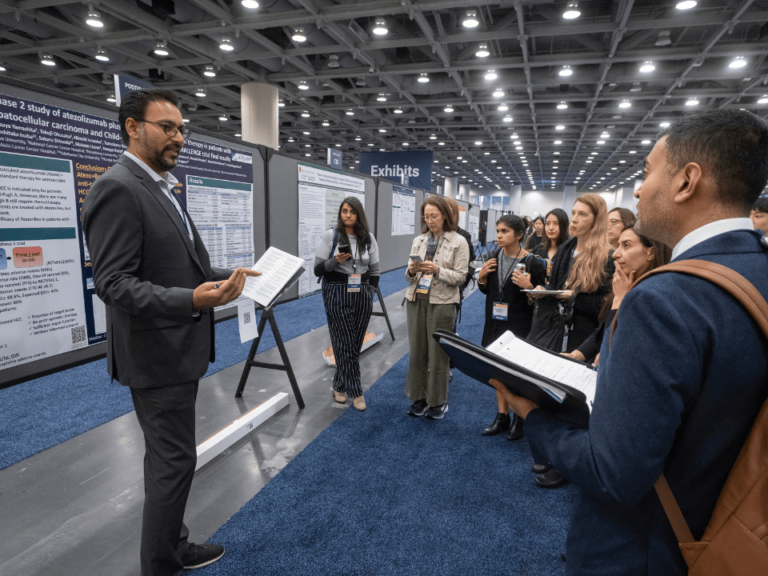Robotic mastectomy deserves to be studied, because the procedure may improve cancer-related outcomes, surgeons at MD Anderson Cancer Center say.
Both robotic and open procedures allow the surgeon to follow oncologic principles, said Jesse Selber, professor and director of clinical research at the Department of Plastic Surgery at MD Anderson.
“The plane of dissection is identical; the way the specimen is removed, oriented and labeled is identical; the margin evaluation and permanent pathologic evaluation is identical,” Selber said. “In fact, because of this improved precision and visualization, there is reason to believe that oncologic outcomes might be improved, because the surgeon will have a better view of the breast tissue that needs to be removed.”
For the nipple-sparing robotic mastectomy, we’re doing this as an IRB protocol, because we want to define the endpoints. We also want to be able to measure those prospectively.
Kelly K. Hunt
The breast gland can be removed en bloc via robotic surgery, said Kelly Hunt, chair of the Department of Breast Surgical Oncology, and a professor in the Division of Surgery at MD Anderson.
“There’s no reason why you would not be able to remove it en bloc,” Hunt said. “Of all the robotic mastectomies that I’ve seen, and a couple of our surgeons have participated in training courses, and it’s very feasible to remove.
“So, it’s not a matter of suctioning it out through a small hole or something like that. That’s not what we would be doing.”
The MD Anderson protocol, which is designed to also enroll patients at Northwell Health Long Island Jewish Medical Center and two institutions in Chicago, will be studying long-term oncologic outcomes. The trial is funded by Intuitive Surgical, manufacturer of the da Vinci Surgical System.
“At MD Anderson, patient safety is paramount. Our experts are working with the FDA for appropriate clearances prior to initiating any studies on minimally invasive surgical approaches to mastectomy in select patients,” an MD Anderson spokesperson said to The Cancer Letter. “Any study also will be subject to MD Anderson’s Institutional Review Board approval and monitoring for quality and safety. This research will explore immediate and long-term outcomes of the procedure.”
Selber and Hunt spoke with Matthew Ong, a reporter with The Cancer Letter.
Matthew Ong: Are robotic mastectomy procedures being performed at MD Anderson Cancer Center?
Kelly Hunt: We are not currently doing them. However, we have a couple of surgeons who have been credentialed in robotic surgery, and one principal investigator with over 12 years of robotic experience.
We wrote a protocol and will be investigating this procedure in a prospective study.
In crafting the protocol, what’s your thinking in terms of endpoints and considerations for the prospective trial? What’s the goal here?
KH: Our goal is to investigate the use of robotic procedures for nipple-sparing mastectomies. We would like to use them specifically for those procedures, because, when working with plastic surgery, we tend to make our incisions either in the axilla or in the inframammary fold below the breast, which makes it more difficult to access all of the breast tissue in order to perform a complete mastectomy.
When you’re trying to access the tissue and skin through these incisions above the nipple and laterally, getting to those areas can be challenging, and currently available retractors are not very useful.
Also, the surgeon tends to have to get into uncomfortable positions in order to have good visualization of the entire operative field. The advantage of the robot is that it allows you to get into remote areas more easily with better visualization. We can use the robot to get into positions that your hand and wrist cannot really achieve without significant difficulty for the surgeon.
In general, what’s involved in the robotic process?
Jesse Selber: The challenge of nipple-sparing mastectomies is trying to achieve a precise dissection through a small incision with minimal illumination and a limited ability to see and reach tissue planes. The robot provides the surgeon with a crystal clear, magnified, front row seat to the most-technically difficult part of a nipple-sparing mastectomy. We think this could result in better outcomes.
Initially, the surgeon makes a four-to-five-centimeter incision, lateral to the breast, at about the level of the nipple. Some initial dissection is performed to create an optical cavity and a confluent space within which to place the instruments. The slender robotic arms are then passed through a port manager, which is fitted into the incision. The port manager separates the arms in space and maintains an airtight seal for insufflation.
The device being the da Vinci Surgical Systems?
JS: Yes, the da Vinci, by Intuitive Surgical, is the only currently commercially available robotic surgical system. After the robotic dissection is complete, the entire breast specimen is removed en bloc, or in one piece, through the same incision in which the ports were placed. The specimen is oriented, imaged in pathology, and sent for frozen section or permanent histologic analysis, depending on the indication for the mastectomy (risk reduction vs. cancer treatment).
This process is routine for any type of mastectomy. Any subsequent reconstruction would also be performed through the same incision.
Will the prospective trial be looking at whether this is a reliable way of removing breast tissue en bloc without, as much as possible, leaving any malignant tissue or tissue with malignant potential behind?
KH: Exactly. Right.
But for now, we don’t know if that is consistently achievable?
KH: Correct. So, there are a lot of reasons why we would or would not do a nipple-sparing procedure—not only if the tumor’s approaching the nipple. Going back almost 30 years when people first started doing skin-sparing surgeries, the idea was to remove the nipple and the areola complex. So, you made an incision around the areola.
To do a skin-sparing procedure, we’re trying to save the entire skin envelope, except for the nipple and areola, and remove all of the underlying breast tissue. There is a normal anatomic plane between the superficial fat under the skin and the actual mammary gland tissue.
When a surgeon does a skin-sparing mastectomy, they make an incision around the nipple areola complex. They sometimes make a little extension out toward the axilla or lower down toward the inframammary fold, depending on what’s needed based on the size of the breast. And so then the surgeon uses specific devices to literally lift the skin off of the mammary gland, which is sent to pathology for examination.
Instead of “nipple-sparing,” some people call it a total skin-sparing mastectomy, meaning we’ve left the skin, the nipple skin and the areola. In order to do that, we don’t like to make the incision around the nipple areola, because that can interfere with the blood supply to the nipple. Therefore, you’re more likely to end up with nipple loss. So it’s better if you can make your incision somewhere else.
I call these “remote” incisions because they’re off the breast. We’re trying to keep scars off of the breast as much as possible. A lot of people think of it as cosmetic, because you’re not putting the scar in the breast, but that’s not the only issue. The medical issue is blood supply to the nipple. Some of that blood supply comes through the skin, but some of it comes through the breast, underneath the nipple.
Just to clarify, when you say remote, are these incisions specific to certain techniques?
KH: No. The access incision can be remote, whether you’re doing it the standard way with electrocautery, with robotics, or when done laparoscopically. The techniques may be similar across diseases, but there are many differences between diseases such as breast cancer and cervical cancer.
Right, the anatomy is completely different. For instance, in one case, you are dealing with tissues deep inside the abdominal and pelvic cavity, whereas the other is on or much closer to the surface?
KH: It’s that, but it’s also that some of these breast cancers are usually deep in the parenchyma, surgeons aren’t touching them, manipulating them with the instruments.
So, just to make sure I really understand this, only one incision is made, or are there a number of small port incisions? An ideal situation is one in which you would only make one incision?
JS: Yes. There is one single incision. The specimen is removed in its entirety through the initial incision, remote from the breast, as Dr. Hunt described, and specifically designed to accommodate the instruments, the specimen, and any post-mastectomy reconstruction.
The procedure is very similar to an open nipple-sparing mastectomy, only with better precision and visualization. The robotic technique we will be using is very close to the way that it’s been described and published by Ben Sarfati in Paris and Antonio Toesca in Milan. It’s become a relatively standardized approach that many surgeons are beginning to consider because of the potential benefits over the traditional approach.
What’s the cutoff point in terms of breast size for this procedure?
JS: In our protocol, we are targeting C-cup breasts and smaller. This is often the upper limit of size for patients considered for open nipple-sparing mastectomy. So, the indications for the robotic cohort in the proposed study are comparable to those for an open nipple-sparing mastectomy.
Before we extend the procedure to more technically challenging, larger-breasted patients, we want to make sure it’s feasible and effective in patients who meet standard, open nipple-sparing mastectomy criteria.
I did notice that the prospective protocol you mentioned does not include oncologic endpoints.
JS: That’s correct.
We touched briefly on this—recent studies in cervical cancer show that overall survival was worsened for women who were subjected to minimally invasive procedures. As you know, that was an incidental finding in a trial studying non-inferiority of laparoscopic and robotic radical hysterectomies vs. open radical hysterectomies. Gyn-oncs believed that it was equivalent or better—and that indeed appeared to be the case for short-term outcomes—but not three to five-year outcomes.
The concern here as well is, if you’re not looking directly at cancer-related outcomes—especially in a new surgical procedure involving patients with cancer or at-risk patients—is there a risk that you’re subjecting women to some unforeseen harm that you may be missing, because you’re not controlling for it? I understand that the anatomy here is different, of course.
JS: That’s not the way that I would characterize it. The safety and feasibility study we are proposing is not adequately powered to draw conclusions about oncologic outcomes.
Let me explain that statement: Cure rates for early-stage disease in patients who would be candidates for nipple-sparing mastectomy are high, meaning recurrence and residual cancer rates are very low. In a clinical study, this event rate is called the effect size. Because the effect size is very small, the number of patients, or sample size, needed to establish an oncologic outcome is very large. This combination of sample size and effect size determines the study’s statistical power.
In addition, recurrence is a longer-term outcome, so the time horizon needed to establish recurrence rates must be measured in years, like the cervical cancer study from MD Anderson you just referenced.
The robot provides the surgeon with a crystal clear, magnified, front row seat to the most technically difficult part of a nipple-sparing mastectomy. We think this could result in better outcomes.
Jesse C. Selber
This is very different than establishing the safety and feasibility of a technique, which evaluates 30-day morbidity of the operation itself. A study of oncologic outcomes would require hundreds of patients and years of data collection. That work absolutely needs to be done, but would be scientifically inconclusive in the context of a study designed to evaluate the feasibility of a surgical technique.
That said, oncologic outcomes will be secondary endpoints in the study, which means they will be officially tracked and reported on for the study period. And we will certainly follow all of the study patients with routine surveillance for the rest of their lives, as with all our cancer patients.
It’s important to make clear that the oncologic principles of the robotic mastectomy are identical to the open procedure. The plane of dissection is identical; the way the specimen is removed, oriented and labeled is identical; the margin evaluation and permanent pathologic evaluation is identical.
In addition, the technical aspects of the robotic surgery are similar, but potentially better than the open surgery, which is already performed through a small incision with limited access. The robot here simply functions as a more precise extension of the human hands and eyes, seeing into difficult to reach areas of the dissection.
In fact, because of this improved precision and visualization, there is reason to believe that oncologic outcomes might be improved, because the surgeon will have a better view of the breast tissue that needs to be removed.
Based on what you know from existing evidence, can tissue fragmentation be avoided? Will tissue with malignant potential be left behind?
KH: I need to go back and say that people have been doing the skin-sparing, nipple-sparing surgery for a long, long time.
And in doing that, people have done studies to compare the oncologic outcomes and amount of breast tissue left behind. When we used to do radical or modified-radical mastectomies, surgeons removed most of the skin of the chest wall with the breast and axillary lymph nodes.
When skin-sparing mastectomies were introduced, clinicians did studies looking at punch biopsies, small biopsies along the skin to include subcutaneous tissue, especially underneath the breast along the inframammary fold and other areas in the standard mastectomy procedure and skin-sparing procedures.
The studies found that the amount of breast tissue left behind was the same with both procedures. This is not malignant tissue, but residual breast tissue. There were no differences in oncologic outcomes between the different procedures. So, when we are doing a skin-sparing or nipple-sparing mastectomy, we try to pay attention to the anatomy of the mammary gland in order to remove as much of the breast tissue as possible.
The challenge is that the breast tissue does extend, sometimes, beyond those traditionally described anatomic landmarks. Also, the Cooper’s ligaments extend from the breast itself up to the skin. We know that breast cells do go along those ligaments.
We tell our patients that we know when we do a mastectomy, no matter which technique is used, we’re not removing 100 percent of the breast tissue.
It’s not really feasible, partly because the breast tissue is not a different color than the subcutaneous fat or tissue.
We try to follow what we know are the normal anatomic landmarks, and we do the procedure as basically an anatomic resection of the gland.
I see. Is the goal, however, still the same, i.e. to basically remove as much as you can, because that’s what a mastectomy is designed to do?
KH: Exactly. I have participated in robotic surgery for other indications, and in my experience, you can visualize things much better with the robot than you can with a standard skin-sparing or nipple-sparing procedure.
Again, because you’re working through these small incisions where it is sometimes difficult to fully illuminate all areas and the surgeon is having to sort of torque their head and neck around to be able to see in these small spaces. To get to the areas under the clavicle and out toward the armpit we are always striving to assure that we have removed all of the breast tissue.
So, in my experience, I would think that the robotic access may provide better visualization than what we have with the standard approaches.
Of course, having no scars on the breast is something we would like to offer patients, but better visualization would make us feel like we’ve done a more complete resection. The robot allows for that type of access.
Also, in order for us to try to remove all the breast tissue, we have to pull up on the skin of the breast, sometimes vigorously to get up over the nipple, up to the tissue under the clavicle. It can be a long distance, depending on the size of the breast.
And so, sometimes we’re putting a lot of tension on those skin flaps, which can cause problems with blood supply and viability as well. With the robotic procedures, the instruments and insufflation lift the skin up, allowing better visualization without so much pressure and tension on the skin.
Since one of the goals here is to remove breast tissue en bloc—is that possible, as we know it?
KH: Correct. There’s no reason why you would not be able to remove it en bloc. Of all the robotic mastectomies that I’ve seen, and a couple of our surgeons have participated in training courses, and it’s very feasible to remove.
So, it’s not a matter of suctioning it out through a small hole or something like that. That’s not what we would be doing.
That would be against oncologic surgical principles.
KH: Yes. Morcellating surgeries are absolutely not something we would do. And usually, for the nipple-sparing, skin-sparing mastectomies, the tumors are smaller, and the location in the breast is known.
They can be larger, but usually for patients that have more advanced disease, we’re doing standard mastectomies, because of the nature of the tumor.
With these-nipple sparing and skin-sparing procedures, we’re generally doing these for patients with smaller, earlier-stage disease. We know where the tumor is, and it’s always our plan to remove the breast and the tissue around that without any fragmentation.
But breast cancer is a little bit different from other cancers in that core needle biopsies are done all the time for diagnosis. These core biopsies are done through the skin, through the breast parenchyma into the breast, into the tumor. The tumor tissue is then extracted through that small core biopsy incision and assessed.
After decades of this in practice, we have not seen that that causes the tumor cells to seed at the incision site of the core biopsy.
So, basically, whoever is doing it with only cosmesis and patient satisfaction as the primary endpoint—meaning, doing robotic mastectomy via only one incision for cosmetic purposes and then forcing the entire gland through one incision, or breaking it up—whoever is doing it that way, is doing it wrong?
KH: It’s ideal not to break up the tissue into little pieces and remove it, then the pathologist will not be able to assess the margins. We always look at the margins of resection to be sure we haven’t left any tumor behind on the skin or on the muscle or in the surrounding anatomic region.
Margin assessment is standard procedure for breast surgery, so we certainly don’t want to miss the opportunity to assess the margin.
However, sometimes when you’re removing the breast tissue—the nature of the breast tissue, it has both breast lobules and parenchyma. It also has some fatty tissue just like other organs in our body. Sometimes, part of that tissue may, as you’re pulling to remove it, come apart.
That’s not a major issue, but certainly taking the breast or removing the skin and then pulling the breast and cutting it up into small pieces to get it out through a small incision is not ideal.
So, basically, whoever is doing it with only cosmesis and patient satisfaction as the primary endpoint—meaning, doing robotic mastectomy via only one incision for cosmetic purposes and then forcing the entire gland through one incision, or breaking it up—whoever is doing it that way, is doing it wrong?
KH: Right.
You mentioned MD Anderson is doing this as a prospective trial, and you’re not offering this as a routine procedure. As a matter of principle, would it be wrong for individual physicians or provider institutions to advertise and offer robotic mastectomy to patients outside a surgical clinical trial? Which would be the opposite of MD Anderson’s approach?
KH: At MD Anderson, we have a committee that specifically evaluates new technology and how it should be introduced into the operating theater.
And we always want to assess a new indication for an existing technology. And so, that would be where the robotic mastectomy comes in. MD Anderson surgeons have done thousands of robotic procedures for other diseases or other indications.
The question is, should it be done for mastectomies? We have a process at MD Anderson whereby we applied through our institution for the privilege of doing these same robotic procedures with existing technology for mastectomies.
It’s critical to be absolutely sure that we’re not only doing the right thing, but doing the thing right.
Jesse C. Selber
We had to demonstrate that: the surgeon has been credentialed; pathologists understand how the tissues are going to be assessed, or what implications there are with respect to this type of procedure; and the whole team has been credentialed for utilizing the robotic platform.
There were multiple other criteria that our institution had to evaluate before we’re able to move forward.
Then we have a committee that assessed, “Okay, is this something that can move forward? As long as the patient signs a consent, then it does not need an IRB protocol? Or, is this something that should be done as an IRB protocol?”
For the nipple-sparing robotic mastectomy, we’re doing this as an IRB protocol, because we want to define the endpoints. We also want to be able to measure those prospectively.
Sometimes, when you go back retrospectively, the data is not clear, and so, it’s hard to report accurately on the success, or lack thereof.
So, after evaluating all the different parameters, we elected to do this as a prospective IRB protocol.
Right. And the protocol, as you describe it, is it accurate to say that it’s essentially a formal investigational study and surgical clinical trial?
KH: Exactly.
I see. Are there plans to specifically look at cancer-related outcomes in a separate study, and is that relevant?
JS: These patients will be followed as we follow all mastectomy patients, with regularly scheduled surveillance guided by a multi-disciplinary team. This is critical to ensuring disease free survival and detecting recurrence, if it happens. These are basic principles of surgical oncology and we take them very seriously in every disease site we treat.
How long do you expect it will take to complete enrollment?
JS: Approximately a year, but that’s subject to enrollment. This is a multi-institutional study, so enrollment at each site will only play a part in the time required for total enrollment.
This is also an early-days question, but once the trial is completed and you find that robotic mastectomy isn’t inferior to standard of care—where 30-day safety and efficacy outcomes are concerned—would that be sufficient evidence to support offering robotic mastectomies as a routine procedure at MD Anderson?
JS: That is a decision that will be made collectively with the Food and Drug Administration. This is an IDE, or Investigational Device Exemption study. That means that the FDA has reviewed the protocol and given investigators permission to use the device “off-label” for the purpose of gathering data. Based on that data, the FDA can then make an evidence-based decision whether or not to grant a 510k indication for “on-label” use.
Based on the data provided from the study, the FDA will ultimately decide whether this is an appropriate use of the device. We believe it is; many others also believe that it is, which is why it is being introduced in multiple centers around the world.
The difference between evaluating the technique in coordination with the FDA and under IRB guidance is that everything is done in a controlled and regulated fashion. It’s critical to be absolutely sure that we’re not only doing the right thing, but doing the thing right.














